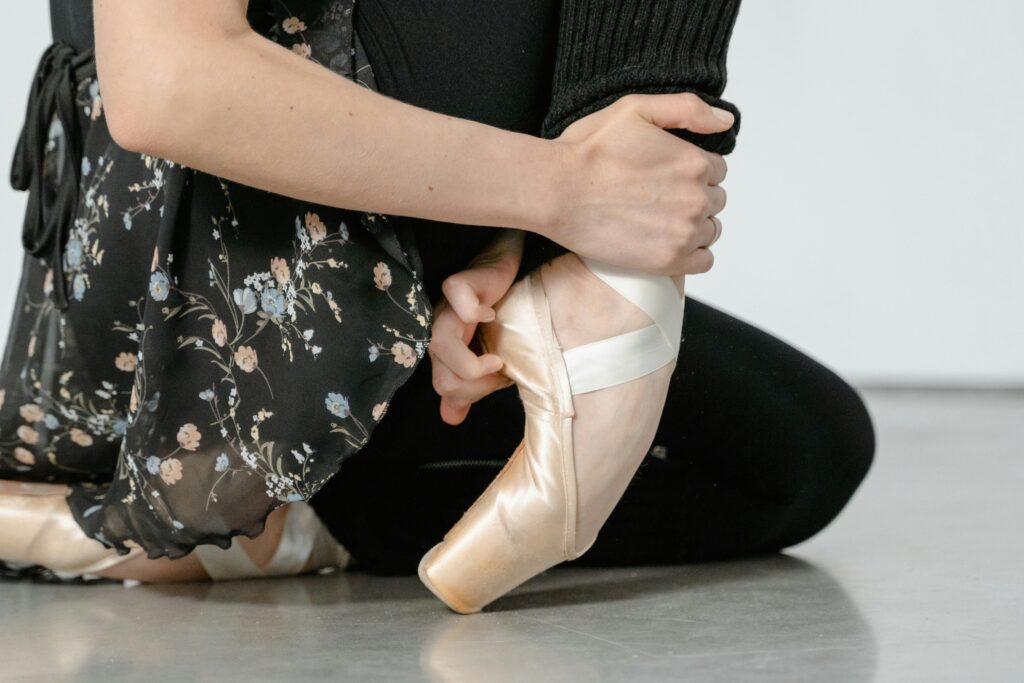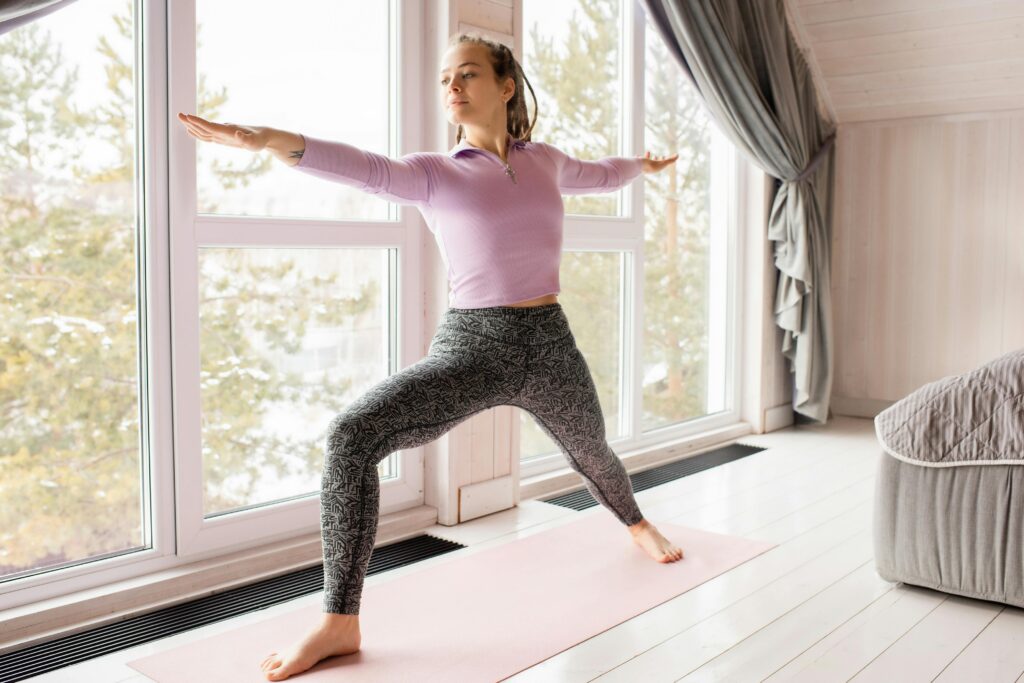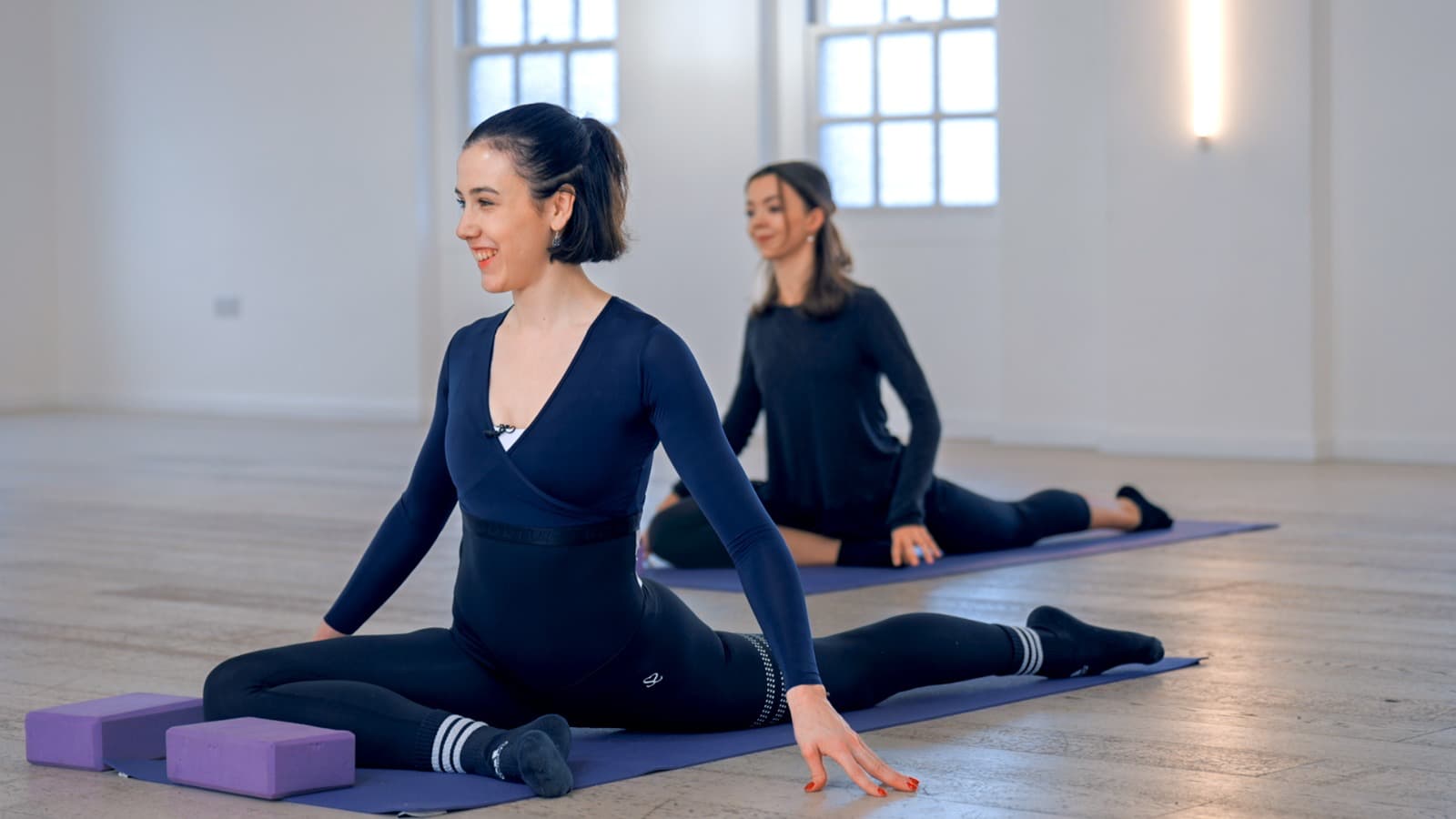Ballet dancers are known for their extraordinary strength, effortless control, and unmistakable grace. Behind each arabesque, pirouette, and grand jeté lies a disciplined training routine that targets every muscle group, from deep core stabilisers to the tiniest foot muscles. And the good news? You don’t have to be a professional dancer to train like one.
In this guide, we’ll break down the essential exercises ballet dancers use to build strength, flexibility, and control. You’ll learn how ballerinas train both in and out of the studio, which exercises you can do at home, and how to cross-train like a dancer to move better in every part of life. Whether your goal is improved posture, enhanced mobility, or simply to feel stronger and more connected to your body, this is your place to start.
Ballet Dancer Exercises: What Do Ballerinas Actually Do?
Ballet dancers use a wide variety of conditioning exercises to develop the hallmark traits of a ballerina body: strong legs, sculpted arms, a lifted posture, and a powerful core.
Ballerina Core Exercises
The core is where everything begins in ballet. Exercises like Pilates hundreds, floor barre core sequences, and controlled relevés build strength in the abdominals, obliques, and lower back. Our 14-day Mat Madness Challenge is ideal for targeting deep postural muscles that support turnout, balance, and precision. These core workouts help stabilise your entire frame, making complex movements like pirouettes, arabesques, and attitude balances more effortless and stable.
Ballerina Leg Exercises
To achieve the strength and control needed for jumps and balances, dancers work through movements like pliés, développés, and tendus with careful alignment. These exercises tone the thighs, glutes, hamstrings, and calves while improving stability. Add in calf rises and battement cloches to strengthen the ankles and build endurance. Isometric holds in passé or retiré are also common to reinforce turnout and muscular control in the legs.
Ballerina Feet Exercises
Strong feet are essential to ballet, and dancers regularly train the intrinsic foot muscles with resistance bands, towel scrunches, and theraband pointing drills. These improve arch articulation and help prevent injury, whether you’re training on pointe or not. Including foot doming and piano toes helps build arch strength and supports smooth roll-throughs during relevés and jumps.
Ballet Arms Workout
Upper body strength is often overlooked, but dancers rely on fluid, controlled port de bras (arm movements) that require serious endurance and precision. The Standing Arms Workout focuses on coordination, control, and toning through repetitive, graceful motion. This helps develop not only strength in the shoulders, upper back, and triceps, but also elegance and flow in upper-body movement.
Ballerina Exercises at Home
You don’t need a full studio to start training like a dancer. Exercises like pliés, tendus, side leg lifts, bridge variations, and core pulses can all be done at home using just a mat and a sturdy surface for support. Ballet With Isabella’s online classes are designed for exactly this purpose, with options to fit any level and available space.
Adding a mirror and light hand weights can enhance your setup, giving you feedback on posture and helping you strengthen supporting muscle groups. A daily 20–30 minute home workout can bring about noticeable changes in your posture, strength, and overall body awareness.
How Do Ballet Dancers Cross-Train?
Dancers don’t just rely on ballet class to stay fit. Cross-training is an essential part of their regimen to enhance performance and reduce injury.
Why Cross-Training Matters
Ballet places repetitive stress on certain joints and muscle groups, particularly the hips, knees, and ankles. Cross-training helps correct imbalances, improve overall conditioning, and maintain strength in areas that ballet alone may not target. It also helps avoid burnout and keeps your routine varied and exciting.
Pilates and Yoga
Pilates is a favourite among dancers because it builds deep core stability, pelvic alignment, and breath control. Movements such as pelvic tilts, leg circles, and spine articulations reinforce ballet technique and strengthen the inner core. Yoga, on the other hand, supports flexibility, joint range, and mindfulness. Poses like downward dog, pigeon, and dancer’s pose (naturally!) help open the hips and shoulders while developing balance and calm.
Many dancers alternate between Pilates and yoga throughout the week to complement more intense training days. These practices are featured in many Ballet With Isabella programmes for their proven benefits to dancers and non-dancers alike.
Strength Training for Dancers
Low-impact strength training with resistance bands or light weights can boost muscular strength and endurance. Think squats, lunges, glute bridges, and upper-body isometric holds. These complement ballet without adding bulk. By targeting stabiliser muscles, strength training supports better control, reduces joint strain, and enables you to sustain long balances or jumps with confidence.
Ballerina Flexibility Exercises
Flexibility is crucial for everything from extensions to arabesques. Exercises like hamstring stretches, hip openers, and backbends help increase mobility and fluidity. You’ll find many of these techniques in our beginner Spine Mobility class, Hip Mobility and Stretch class and Hamstring Stretch class. These classes include active and passive stretches and dynamic flexibility drills that work in harmony with strengthening exercises for long-term gains.
Turnout and Foot Conditioning
Turnout is a defining feature of ballet, and it requires careful conditioning of the hips, glutes, and rotator muscles. Our Intrinsic Foot Workout class and Turnout and Beats Conditioning class includes drills to strengthen and stabilise these areas, while improving speed and control in petite allegro. Exercises include slow, outward hip rotations, beats at the barre, and resistance-band turnout practice to reinforce muscle memory and control.
Beginner Ballet Dancer Exercises
If you’re completely new to ballet, don’t worry—there are plenty of beginner-friendly movements you can incorporate into your routine.
Start with a Structured Routine
A great place to begin is with our Very Beginner Barre class. It introduces foundational ballet exercises with step-by-step guidance to help you build strength, alignment, and understanding of basic technique. Starting with a warm-up and moving through pliés, tendus, and port de bras, the class sets you up for confidence and progress. You can learn all the basics for ballet in this Absolute Beginner Plan!
Posture and Alignment Work
Good ballet posture involves a lifted chest, elongated spine, neutral pelvis, and engaged core. Practise standing in first position, holding your arms in fifth en haut (overhead), and balancing in relevé. These may seem simple, but they teach body awareness and control. Even 5–10 minutes of posture work daily can dramatically improve your stance, breathing, and movement quality.
Leg and Core Exercises for Beginners
Try pliés at the barre or kitchen bench, tendus to the front and side, and seated ab pulses. You can also incorporate floor work like leg circles, glute bridges, and modified plank holds to build foundational strength. These low-impact exercises prepare your body for more advanced ballet work and build endurance in the supporting muscles that dancers rely on every day. Great online classes to try as a beginner include the Beginners Toning Workout Plan and the Build Strength and Stamina Plan!
Simple Flexibility Work
Stretch your calves, hamstrings, quads, and hips with basic forward folds, lunges, and butterfly stretches. These are safe, effective ways to increase mobility without needing to be overly flexible from the outset. Consistency is key—aim for 10 minutes a day to see improvements over time.
Beginner Training Tips
- Warm up before each session and cool down afterwards
- Focus on form, not how high or far you can stretch
- Train barefoot or in soft ballet shoes for better foot articulation
- Use props like yoga blocks or resistance bands for support and progression
Start Training Like a Dancer Today!
You don’t need a tutu or years of experience to benefit from ballet training. With the right exercises and expert guidance, you can develop a strong, graceful, and balanced body that moves beautifully—both in and out of the studio.
Online ballet workouts offer a unique combination of strength, precision, mobility, and elegance that are hard to find in any other training style. You’ll not only look and feel better, but move with greater purpose and poise in everyday life.
Ballet With Isabella offers online programmes designed for every level, from complete beginner to advanced dancer. Whether you’re looking to tone your legs, strengthen your core, or simply embrace a more elegant form of movement, our online classes make it easy to start.
Want to train like a ballerina? Explore our online classes and start your journey today with a free 14-day trial!




